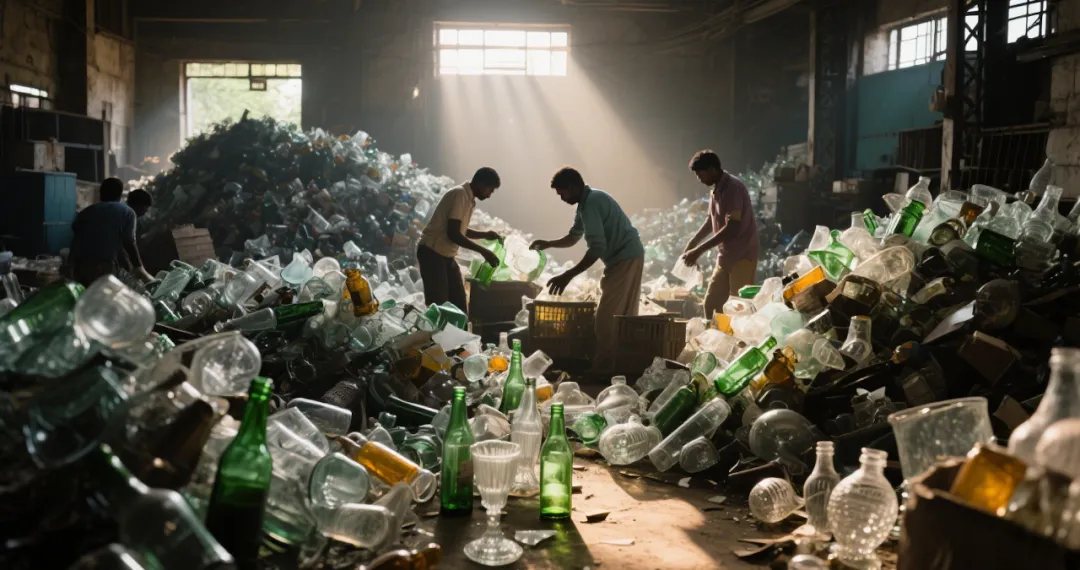
In an interview with South Asia Packaging, Rajesh Khosla, CEO of AGI GreenpacAn in-depth look at the current state of the glass recycling system in India, its economic viability and profit model, as well as the main challenges that hinder efficient recycling. He also described some of the advanced technologies being applied in the industry that have significantly improved the efficiency of glass processing and led to the continuous improvement of the purity of recyclable cullet.

According to Khosla, glass recycling has a key role to play in the sustainable development of India's packaging industry and is economically viable. However, profitability depends on a number of factors, such as the quality of the recycled cullet, the efficiency of the recycling system, and market demand.
He emphasized that AGI Glaspac's continuous investment in R&D and manufacturing technology has helped the company maximize the use of recycled glass, thereby effectively reducing raw material costs and reducing its carbon footprint. Khosla believes that more policies to encourage the circular economy and provide incentives for recycling companies will further drive long-term sustainability and economic returns.
At present, India's glass recycling system is still in the development stage, especially in the recycling, sorting and treatment links, there is still a lot of room for improvement. Although glass itself can be 100% recyclable without loss of quality, it is faced with problems such as waste stream pollution, weak public awareness, and fragmented supply chains, which reduce the overall recycling efficiency.
Nonetheless, the overall trend is improving as the industry gradually adapts and responds to the new policies. "Regulations such as Extended Producer Responsibility (EPR) are driving companies to pay more attention to the management and recycling of glass waste," he said. Further efficiency and sustainability will require enhanced source separation, standardizing and integrating recycling networks – including the development of reverse logistics systems and support for informal recycling forces, and greater investment in advanced treatment technologies. ”
Among them, insufficient source separation is one of the main challenges at present. He stressed that changing consumer behaviour and improving the quality of recyclable glass must rely on community engagement and broad public outreach.
Khosla believes that in order to build a complete glass recycling ecosystem, it is necessary to achieve synergies across the entire value chain. "Glass companies need to work closely with waste management companies, local governments and industry associations to create a system that integrates recycling and treatment. This collaboration helps to optimize logistics, increase recycling rates and ensure a stable supply of high-quality recycled glass. ”
He further noted that several industries are embracing the trend towards more sustainable packaging. For example, the cosmetics, beverages and pharmaceuticals sectors are moving towards lightweight packaging, increasing the use of recycled materials, and introducing smart packaging designs. Due to its recyclability, inert material properties and high-end appearance, glass packaging is becoming the first choice for more and more brands to achieve environmental protection and differentiation. In the field of skin care products, clear glass tubing is becoming more and more widely used, not only to show the color of the product, but also to allow consumers to know how much to use.
In the cosmetics and personal care industry, purple glass, antimicrobial glass, as well as refillable and co-branded packaging are gradually becoming mainstream; The beverage industry focuses on returnable bottles, UV-resistant coatings and embossed brand logos; The demand for borosilicate glass and tamper-evident packaging bottles in the pharmaceutical industry is also growing. In the field of fast-moving consumer goods, transparent glass jars with lightweight, minimalist designs are becoming popular.
"In the future, we hope to not only continue to support the production of glass packaging, but also to be an enabler of the circular economy – by recycling cullet and putting it back into packaging production, truly closing the loop. ”
He finally added: ".A series of technological breakthroughs in the industry are dramatically increasing glass processing capacity and producing higher purity recycled glass. Key innovations include: an advanced optical sorting system that identifies and rejects ceramic, stone, metallic and coloured impurities; Automated metal detection and removal equipment; Precise crushing and screening technology to ensure uniform particles; and an efficient washing and drying process to remove residues thoroughly. All of this provides a solid foundation for a greener and more efficient glass recycling industry. ”
Name: Litong Glass
Mobile:+86 16632961602
Tel:+86 16632961602
Email:vip@litongglass.com
Add:Shahe city,Hebei,China